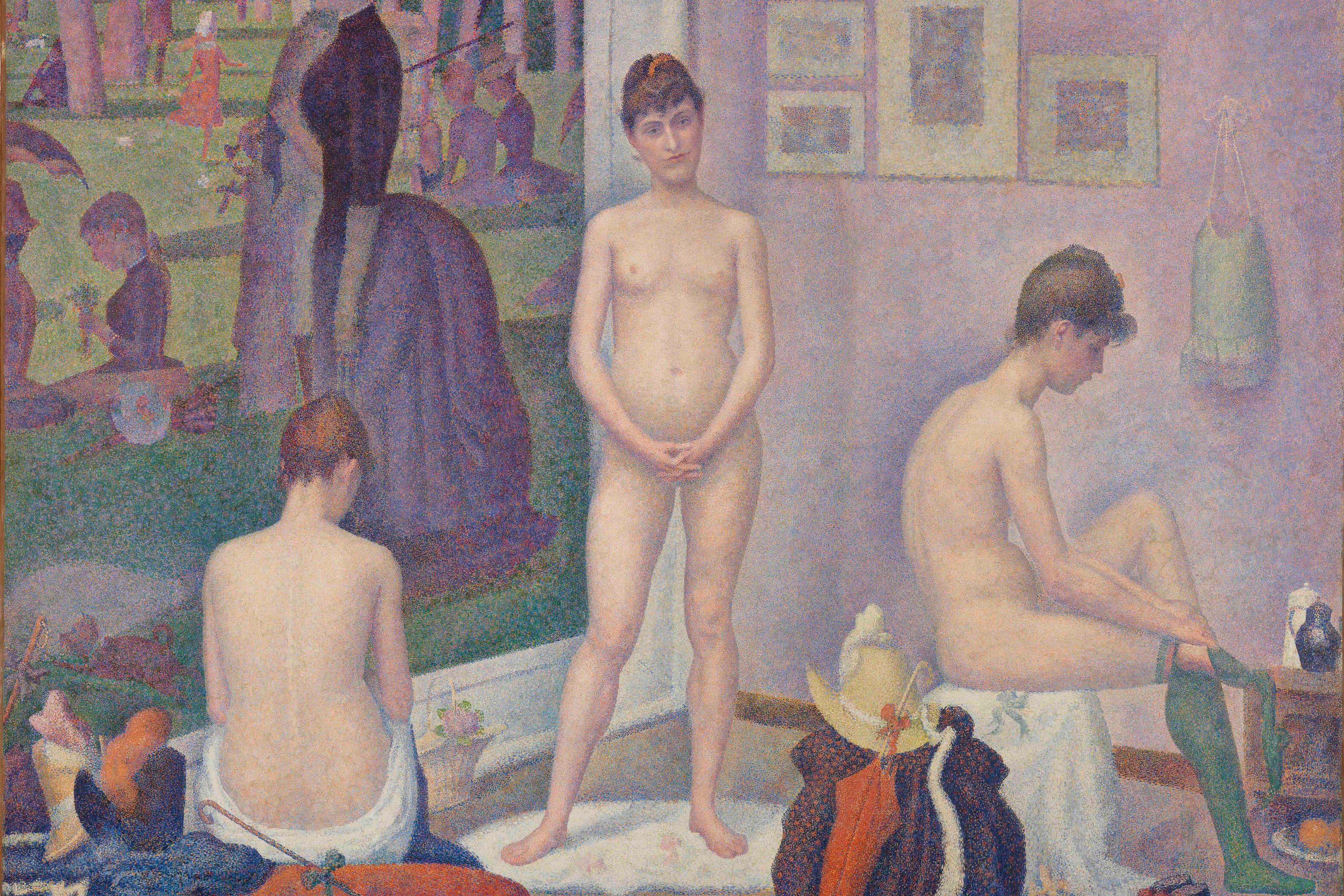For subtitles, click the ‘Subtitles/closed captions’ button at the bottom right of the YouTube player.
The Swiss painter and sculptor Alberto Giacometti (1901-66) personifies, in many ways, the trope of the eccentric, obsessive artist. Filmed in some of his final days, Giacometti (1967) was originally commissioned by the Arts Council of Great Britain to coincide with their 1965 retrospective of his work at the Tate gallery in London. The short documentary portrays an afternoon with Giacometti in his charmingly worn-down Paris studio, where he spent countless hours crafting the skinny, elongated human sculptures for which he was best known.
The UK director Michael Gill (1923-2005) captures Giacometti’s feverish process in close-ups – his thumbs and index fingers pinch to shape, reduce and reshape the clay. He builds, tears down and builds again. His hands move up and down a figure almost manically, yet with purpose. As the narrator declares at the film’s close, in his work, ‘the traces of an uneasy compulsive activity shape the image of a separate presence’.
Although his process was all his own, Giacometti drew inspiration from his predecessors – the posture of his female figures share a timeless quality with the standing figures of Ancient Egypt. However, he also made a point to liberate himself from Renaissance sculptors such as Michelangelo, who, working in the Classical tradition, often depicted human forms imbued with divinity, heroism and mythology. ‘I do not work to create beautiful paintings or sculpture,’ he said. ‘Art is only a means of seeing. No matter what I look at, it all surprises and eludes me, and I am not too sure of what I see.’
His wispy, indistinct figures seem to embody this uncertainty. From a distance, it’s hard to decipher their features yet, as the camera inches closer, they somehow become even more difficult to discern. No matter the proximity, there’s a constant, unsettling distance between the object and the viewer, which, in the film, is further highlighted by a dissonant soundtrack. Like many of his contemporaries, including his drinking buddy Jean-Paul Sartre, Giacometti’s work was heavily influenced by a sense of disillusionment and abandonment born of the horrors of the First and Second World wars. Indeed, his male figures are often depicted wandering in an almost mindless state, as if roaming a battlefield or bombed-out city. Or, perhaps, each step is an act of dignity and defiance amid a cruel and meaningless world.
In essence, Giacometti’s raison d’être was to depict humanity as truthfully as he could – a task he recognised as absurd. This becomes evident in the film, as his sonorous voice explains the impossibility of accurately portraying the shape of an eye through clay. With his hands and through his process, Giacometti grappled with these existential questions of reality, truth and the self with the serious dedication of a monk or a philosopher. Ultimately, this tireless work took a toll on his health – Giacometti would never witness his retrospective at the Tate Gallery in person, dying in 1966 from heart complications made worse by years of fatigue. But, as nearly anyone who has experienced one of his engrossing works in person knows, this life of striving and struggle was hardly meaningless in the end. ‘In frontally opposing Classicism, Giacometti has restored an imaginary and indivisible space to statues,’ Sartre wrote of his friend in 1948. ‘In accepting relativity from the very start, he has found the absolute.’
Written by Tamur Qutab







